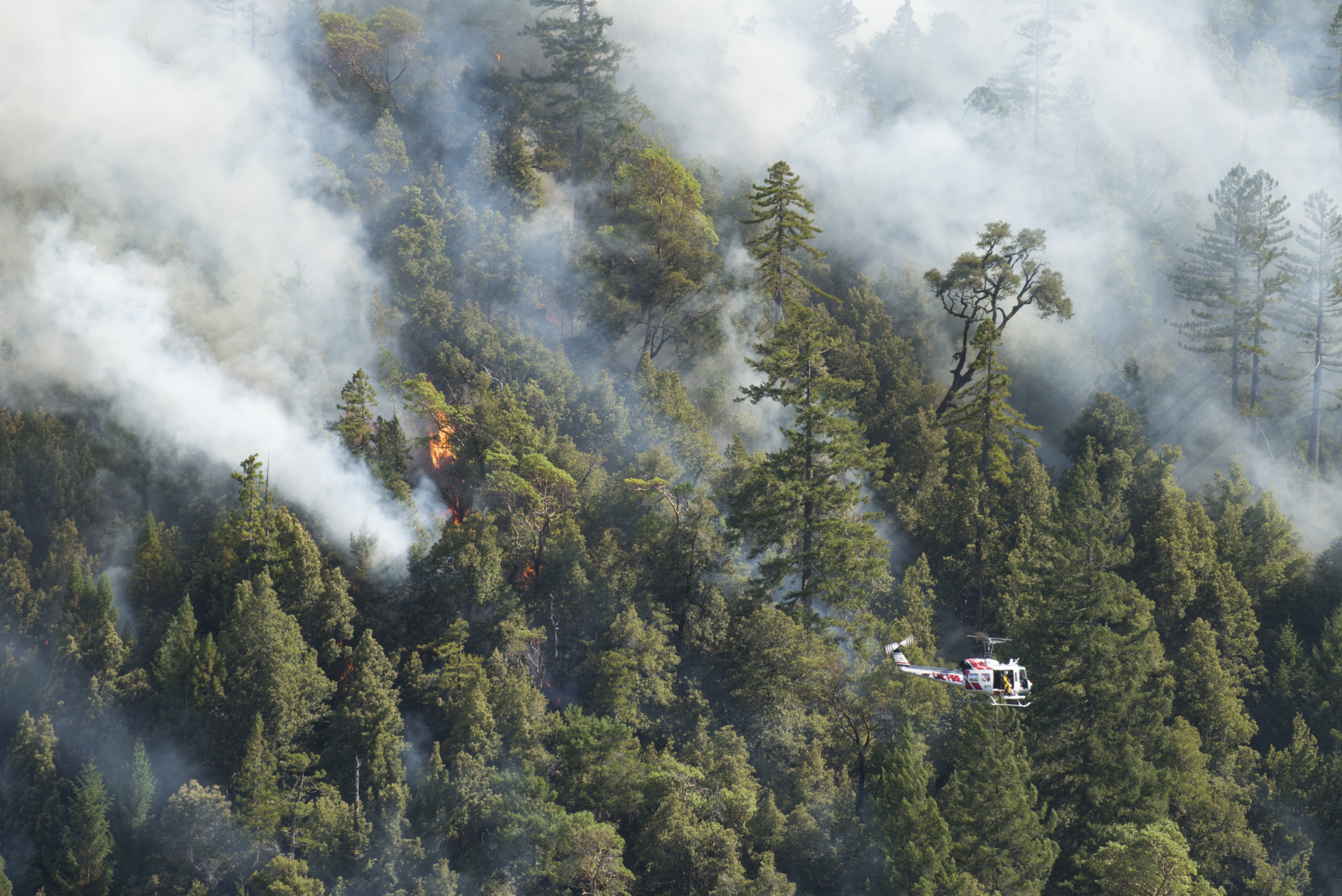
Despite improvements, agencies should develop consistent policies.
Fueled by hotter temperatures, drought, and fire management practices such as suppression, wildfires in the western United States are increasing. This year has been one of the “worst in the nation’s history,” with more than 8.8 million acres of land already burned in fires.
Concerned for the ecological and financial impact of wildfires, a federal auditor has recently issued a report recommending that agencies develop more specific criteria for reviewing and assessing fire data.
The report, issued by the U.S. Government Accountability Office (GAO), an independent agency providing auditing services for Congress, stresses the importance of consistent wildfire data review. The GAO notes that, although Congressional and agency policy calls for review of any fire suppression effort totaling $10 million or more, agencies often fail to do this.
Federal agency officials told the GAO that suppression costs alone are not an accurate indication of the government’s effectiveness in responding to fires. Instead, agencies consider subjective factors such as “complexity and national significance, taking into account political, social, natural resource, or policy concerns” when deciding which fires to review. The GAO believes that more specific selection criteria would allow government agencies to improve the quality of their review and enhance their ability to make strategic management decisions.
The GAO’s most recent report follows up on recommendations it made in 2009. Five federal agencies–the Forest Service, the Bureau of Land Management, the Fish and Wildlife Service, the National Park Service, and the Bureau of Indian Affairs–are responsible for managing wildland fires on about 700 million acres of government land. In its 2009 findings, the GAO noted that these five agencies had failed to create consistent strategic and financial fire management policies. The GAO now concludes that, despite progress in recent years, agencies still need to improve their coordination to “ensure that their fire reviews provide useful information about the effectiveness of their wildland fire activities.”
Since 2009, federal agencies have implemented significant changes. For example, the five agencies listed above issued updated guidance articulating their policies for wildland fires. This guidance encourages agencies to consider multiple factors in decision-making about fire management. For example, agencies should consider the positive implications that fires may have for natural resources, such as grasslands and forests.
In the years since the 2009 report, the agencies also developed a strategy for cooperation between federal, tribal, state, and local agencies in addressing multi-jurisdictional fires. However, the GAO’s most recent report notes that conflicts of law could limit the strategy’s impact because state or local jurisdictions may have an approach to fire management that differs from that of the agencies. The report also highlights tactical changes that the agencies have implemented in the last six years, including increased emphasis on technology, training, and firefighter safety.
Next, the GAO analyzed the agencies’ approach to measuring the effectiveness of their response to fires. Among other things, agencies have utilized studies to determine whether methods such as “fuel reduction treatment and aerial firefighting” are helpful. However, the GAO found that, by failing to develop specific criteria for review, agencies limited the usefulness of this information.
Finally, the GAO reviewed the five agencies’ approaches to distribution of fire management resources. It found that the agencies placed unnecessary reliance on historical records in decision-making about how to allocate funds for managing fires. Instead of reviewing recent information, which “better reflects current conditions” about suppression spending, agencies calculated the average cost of suppression over the past decade.
Fires represent an increasing financial strain on federal agencies. During the last twenty years, the Forest Service’s fire management expenditures have increased from 16 percent to 52 percent of the agency’s total budget. The Forest Service recently estimated that the amount it spends on wildfires will account for more than two-thirds of its total budget within ten years.
As costs of fire management increase, suppression is a growing expenditure for agencies. The practice also has ecological implications. Continued policies of fire suppression create higher fuel levels – which can kill trees and other plants – that in turn can heighten overall fire risk.
Although suppression remains a common practice, the agencies’ tripartite approach to managing fires also includes preparedness and fuel reduction. The GAO found that, as with suppression, agencies consulted historical records instead of reliable, current data reflecting recent trends when distributing resources for preparedness and fuel reduction. The report notes, however, that the agencies plan to abandon this approach and adopt methods based on more recent data moving forward.
For the most part, agencies agreed with the GAO’s recommendations. The Forest Service is currently developing specific criteria for how it will select fires for review, including the severity and exceptional nature of fires. In addition, the Department of the Interior has formalized an agreement with the Forest Service to implement a cohesive information and technology strategy for fire management.
The GAO has analyzed wildland fire management in the past. In addition to the 2009 and 2015 reports, it has issued multiple recommendations over the years emphasizing the need for cohesive strategy among agencies in reviewing fire data. The GAO considers the management of wildland fire to be a key issue because of its threat to communities and natural habitats.



